When exploring the American Civil War, a central question persists: Was the conflict truly about states’ rights? The Civil War’s root cause was multi-layered, with states’ rights playing a significant role alongside economic and cultural factors, intertwined with the issue of slavery.
Join us on a journey to understand the true nature of the Civil War and challenge conventional perspectives on the role of states’ rights in this pivotal moment in American history.
- 1. Defining States' Rights
- 2. States Rights': Timeline of Key Political Events
- 3. Political Positions: States' Rights vs. Federal Power in 19th Century
- 4. States' Rights as a Southern Shield
- 5. Declarations of Secession: Slavery vs. States' Rights
- 6. What Motivated Ordinary Southerners to Fight in the Civil War?
- 7. What were the North's Motivations for Military Action?
- 8. The Emergence of the Lost Cause Myth
- 9. Final Thoughts: The Civil War and States' Rights
- Further Reading
1. Defining States’ Rights
States’ rights refer to the powers reserved for the states under the United States Constitution.
The 10th Amendment in the Bill of Rights states that:
“The powers not delegated to the United States by the Constitution, nor prohibited by it to the States, are reserved to the States respectively, or to the people.”
Bill of Rights
This amendment embodies the Federalist principles of limited national government.
It seeks to protect state sovereignty and autonomy by limiting the federal government’s powers to those explicitly outlined in the Constitution.
The inclusion of the 10th Amendment reflected the founders’ aim to create a balanced system with power shared between federal and state governments.
However, it also created inherent tension surrounding the boundaries of state and federal power.
Debates over how to interpret the 10th Amendment and balance state and federal authority began in the early years of the Republic and continued up to the Civil War era.
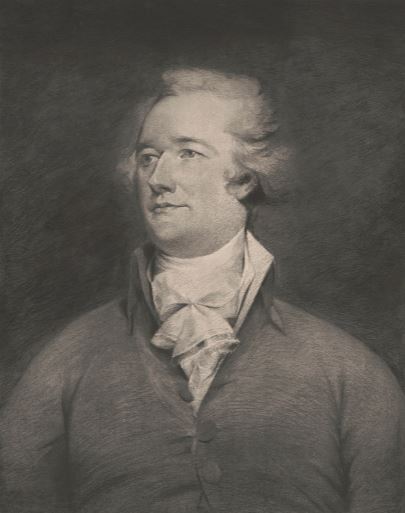
In the 1790s, heated debates erupted between federalists like Alexander Hamilton and anti-federalists like Thomas Jefferson over how much power the federal government should have versus state governments.
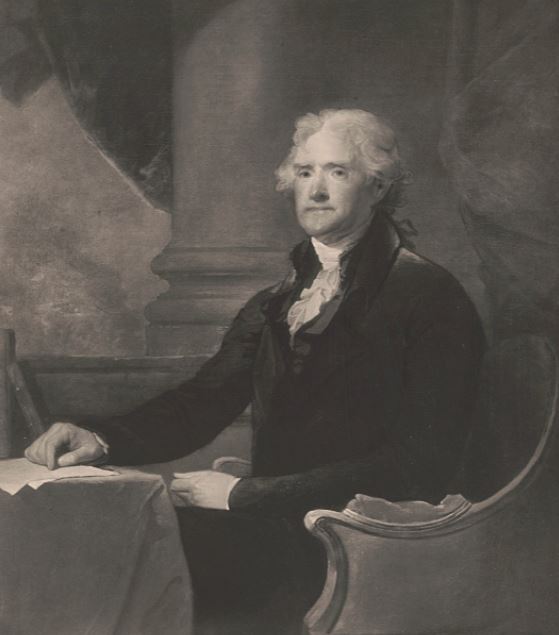
Federalists argued for a strong central government, while anti-federalists believed too much federal power would trample states’ rights.
In subsequent decades, Southerners would frequently invoke states’ rights in defending slavery and criticizing federal interference.
They claimed slavery was an issue reserved for state jurisdiction based on the 10th Amendment. Any attempt by the federal government to restrict or abolish slavery constituted overreach violating states’ rights.
Meanwhile, Northerners accused the South of using states’ rights as an excuse to maintain slavery and expand it westward.
Debates raged over whether the federal government could ban slavery in new territories and states.
By 1860, tensions surrounding states’ rights and slavery’s expansion came to a head.
The resulting Civil War was the bloody climax of decades of contention surrounding the 10th Amendment and the line between federal and state power.
Whilst the Union victory settled the slavery issue, debates over states’ rights and the proper balance of state-federal power continue to persist.
2. States Rights‘: Timeline of Key Political Events
There were several political moments in the fledging nation’s history that involved the issue of states’ rights. The key events leading up to the Civil War included:
- 1776 – Declaration of Independence asserts the sovereignty of the individual former colonies, now states, from British rule.
- 1781 – Articles of Confederation establish a weak federal government and strong state sovereignty.
- 1787 – Constitutional Convention seeks to balance state and federal powers. The Constitution grants limited enumerated powers to the federal government.
- 1789 – The 10th Amendment in the Bill of Rights reserves powers not delegated to the federal government to the states.
- 1790s – Federalists vs. anti-federalists debate central vs. state powers. Leads to first political parties, the Federalist Part and Democratic Party.
- 1798 – Kentucky and Virginia Resolutions assert states can nullify federal laws seen as unconstitutional.
- 1812-1815 – New England states oppose War of 1812; some threaten secession.
- 1828-1832 – South Carolina objects to federal tariffs; asserts state nullification right.
- 1846 – Wilmot Proviso proposes banning slavery in any territories gained from Mexico.
- 1850 – South resists California entering as a free state, leading to the Compromise of 1850.
- 1854 – Kansas-Nebraska Act allows vote on slave or free status of territories, enraging the North.
- 1857 – Dred Scott decision denies Congress power to ban slavery in territories.
- 1860 – Election of Lincoln prompts South Carolina and other states to secede, citing states’ rights.
- 1861-1865 – Civil War is fought over secession and slavery issues. Union victory settles federal power over states’ rights.
3. Political Positions: States’ Rights vs. Federal Power in 19th Century
The tension between states’ rights and federal power was a defining feature of American politics in the 19th century. Several significant positions emerged, each with prominent figures and arguments:
1. Strong Federalists e.g., Alexander Hamilton, John Adams:

- Belief: Advocated for a strong central government, emphasizing national unity and economic development.
- Arguments:
- Necessary for national defense and commerce.
- Encourages national infrastructure and economic stability.
- Can effectively deal with foreign policy and national security.
- Opposition: Viewed by some as overstepping states’ rights and creating too much centralized power.
2. Democratic-Republicans e.g., Thomas Jefferson, James Madison:
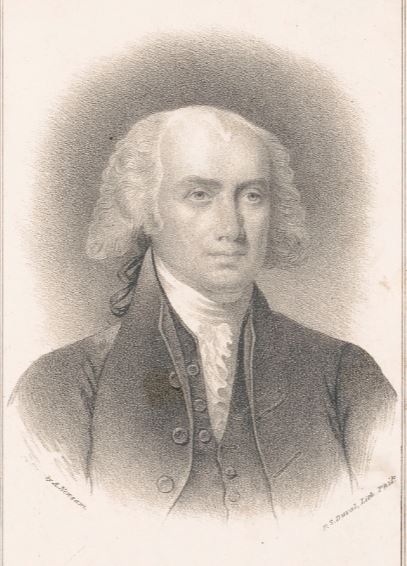
- Belief: Favored a limited federal government and strong state autonomy.
- Arguments:
- Protects individual liberty and prevents tyranny.
- States are closer to the people and better understand local needs.
- Prevents excessive federal taxation and spending.
- Opposition: Some argued it weakened national unity and hindered effective governance.
3. Nullification (e.g., John C. Calhoun):
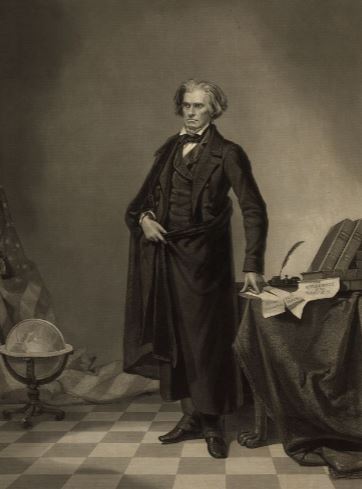
- Belief: States have the right to nullify federal laws they deem unconstitutional, essentially nullifying federal power in their territory.
- Arguments:
- Protects states from federal overreach and preserves their sovereign power.
- Ensures state sovereignty as stated in the Constitution.
- Opposition: Considered radical and a threat to national unity and the supremacy of federal law.
4. Abolitionists (e.g., William Lloyd Garrison, Frederick Douglass):
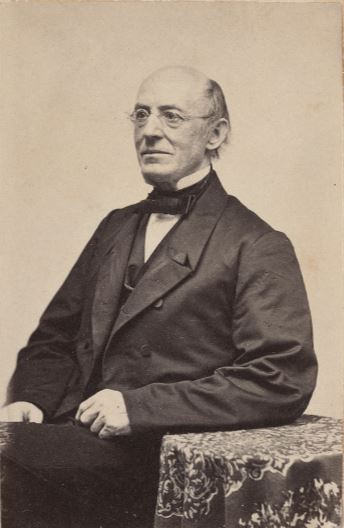
- Belief: Demanded immediate and complete abolition of slavery regardless of states’ rights or federal power.
- Arguments:
- Slavery is morally reprehensible and violates human rights.
- The federal government has the power to end slavery through constitutional amendments.
- Opposition: Faced hostility from pro-slavery factions in both federal and state governments.
5. Constitutional Unionists e.g., John Bell
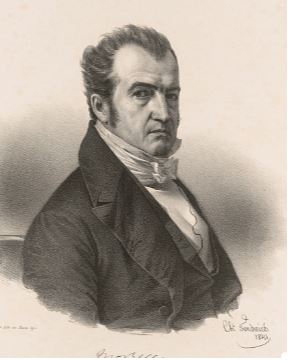
- Belief: Emerged before the Civil War, prioritizing preserving the Union over states’ rights or abolition.
- Arguments:
- Maintaining the Union is vital for national prosperity and stability.
- Compromise on slavery should be pursued to avoid secession and war.
- Opposition: Viewed as indecisive and unable to address the central issue of slavery.
The debate on states’ rights and federal power evolved throughout the century, contributing to major events like the Nullification Crisis and the Civil War.
4. States’ Rights as a Southern Shield

As differences surrounding slavery mounted, Southern states increasingly invoked states’ rights to shield the institution from federal interference.
Southern leaders argued that slavery was a state issue, not a federal one.
The South saw any attempt by the federal government to restrict or abolish slavery constituted overreach violating states’ rights under the Constitution.
This “states’ rights doctrine” was invoked to counter abolitionist initiatives and Northern efforts to limit slavery’s expansion westward.
Southerners claimed banning slavery in new territories violated the equal rights of states to decide their own institutions.
These principles were tested during the “Nullification Crisis” of 1828-1832.
South Carolina objected to federal tariffs that benefited Northern industry at the South’s expense. They asserted the right of states to “nullify” federal laws seen as unconstitutional.
South Carolina’s ordinance of nullification and threat to secede forced Congress to lower tariffs.
This emboldened Southern states to use states’ rights and secession threats to resist perceived Northern aggression regarding slavery.
By 1850, states’ rights arguments intensified as the North resisted slavery’s expansion.
The 1850 Compromise admitted California as free but allowed New Mexico and Utah territories to permit slavery based on “popular sovereignty.” Fugitive slave laws were strengthened to appease the South.
The 1854 Kansas-Nebraska Act took the controversial step of repealing the Missouri Compromise line. It allowed settlers in those territories to vote on permitting slavery, enraging Northerners. Bloody fighting erupted between pro and anti-slavery settlers in Kansas.
Such conflicts showed how slavery was tearing apart national unity. While some Southerners called for protecting slavery where it existed, others wanted its expansion protected.
Lincoln’s election in 1860 on a platform of halting slavery’s expansion prompted the first Southern states to secede even before he took office. Confederate states were committed to permanently protecting slavery as central to their economy and society.
Beginning with South Carolina, Southern states declared secession from the Union as a revolutionary act to protect their sovereignty and maintain slavery against Northern threats. States’ rights became their rallying cry.
In his Cornerstone Speech in March 1861, Confederate Vice President Alexander Stephens said:
Our new government is founded upon exactly the opposite idea; its foundations are laid, its corner- stone rests, upon the great truth that the negro is not equal to the white man; that slavery—subordination to the superior race—is his natural and normal condition. This, our new government, is the first, in the history of the world, based upon this great physical, philosophical, and moral truth.
Confederate Vice President Alexander Stephens
This profoundly racist “cornerstone” fueled their intense defense of states’ rights against Northern interference.
Southern invocation of states’ rights from 1820-1860 was fundamentally aimed at shielding slavery. While genuine constitutional debates existed, preserving slavery was the primary motivation behind this contentious doctrine.
5. Declarations of Secession: Slavery vs. States’ Rights
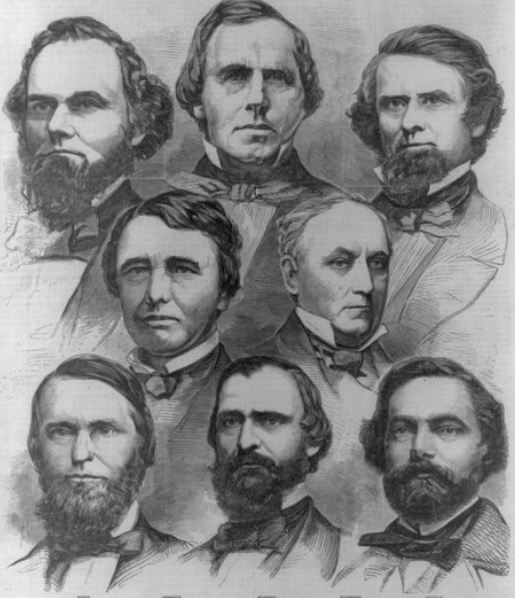
While each Southern state’s Declaration of Secession had unique elements, they fell into two main categories: those explicitly focusing on slavery and those emphasizing states’ rights. Here’s a breakdown:
States Explicitly Mentioning Slavery
- South Carolina: The first to secede, their declaration heavily focused on protecting slavery, citing Northern “hostility” and violation of constitutional obligations (Fugitive Slave Act). It declared their right to secede due to these threats.
- Mississippi: The Mississippi Declaration of Secession paints a very specific picture of slavery, portraying it as the cornerstone of Southern society and presenting its opposition as an existential threat. The declaration explicitly states that slavery is “the greatest material interest of the world,” highlighting its central role in Mississippi’s economy and the wealth of its citizens.
- Georgia: Acknowledged other issues but declared the “increasing hostility of our non-slave-holding confederates towards the institution of slavery” as the primary reason for secession.
- Texas: Though mentioning tariffs and states’ rights, slavery received significant focus, stating “we are determined to maintain our institutions and rights secured to us by the Constitution.”
- Alabama: While highlighting states’ rights, it declared they have “no alternative but to dissolve their connection with the government of the United States.” This action was “prompted by the election of Abraham Lincoln… whose policy is hostile to slavery.”
States Focusing on States’ Rights
- Florida: Primarily centered on “constitutional violations” by the North and the “right of a State to secede from the Union.” Slavery is mentioned, but indirectly tied to states’ rights arguments.
- Louisiana: Emphasized “the right of a State to secede from the Union,” citing violations of the Constitution and federal overreach. While slavery played a role, it’s not as explicitly central as in other declarations.
- North Carolina: Similar to Louisiana, it focused on states’ rights and “unjust and oppressive legislation” from the North. Slavery is only mentioned in passing, primarily in relation to potential future federal interference.
- Arkansas: Declared secession based on “unbearable wrongs and grievances” inflicted by the North, focusing on federal overreach and states’ rights. Slavery is mentioned but doesn’t receive the same emphasis as in other declarations.
- Virginia: Focused on “the preservation of our institutions and the vindication of the principles of our ancestors,” citing states’ rights and perceived Northern tyranny. However, Virginia had a large slave population and the declaration implicitly acknowledges the connection between states’ rights and protecting slavery.
6. What Motivated Ordinary Southerners to Fight in the Civil War?
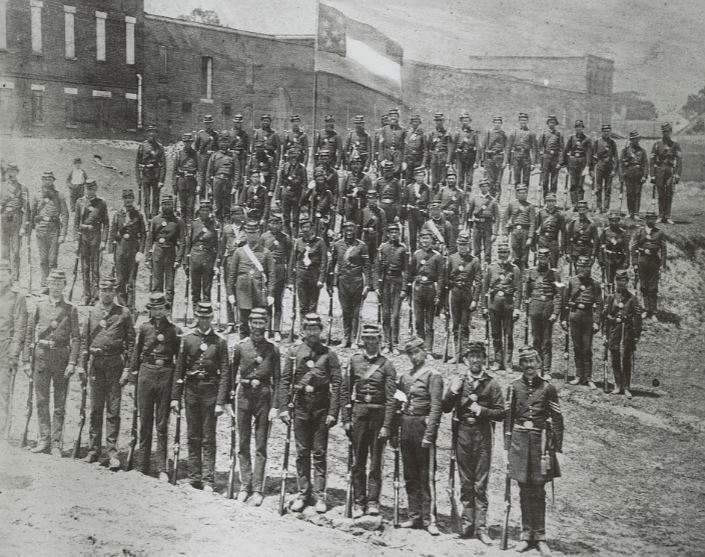
Whilst States’ Rights and slavery were the primary reasons why the Southern states seceded from the Union, the general population had different reasons to fight in the Civil War.
Loyalty to the Home State
In the 19th century, most Southerners’ strongest loyalties lay with their home states rather than with the nation as a whole. This identification with one’s state over the federal government dated back to the American Revolution. Southerners saw their state as their primary country. They viewed the United States as a voluntary union of sovereign states.
When their home states seceded from the U.S., Southerners felt duty-bound to defend them against invasion.
In their minds, they were not rebelling against the proper authority but rather upholding the ultimate sovereignty of their independent state governments.
They joined the Confederate military to resist and defeat what they saw as Northern aggression against their communities, lands, and state’s rights was an incredibly powerful motivation for the average Southern soldier during the war.
Defense of Southern Rights
The Confederate cause was framed as a righteous fight against Northern aggression threatening the South’s constitutional rights to democratic self-determination.
Enlisting to protect these political principles of states’ rights and limited government was compelling for many.
Slavery
Many of the Confederate soldiers comprised, poor Southern whites who did not have any slaves. Only about 1 in 4 Southern households owned slaves, so many ordinary soldiers were not fighting to directly defend a personal economic investment in slavery.
Lower-class Southerners often held economic resentments against the slave-owning planter class.
Perseveration of slavery was not a key motivation to fight.
The Confederate leadership framed the war as defending Southern states’ rights, homes, and way of life from Northern aggression. This wider appeal around rights and homes resonated more with non-slaveholding soldiers versus a pure defense of slave ownership alone.
Conscription
As Confederate ranks thinned from mounting casualties over the course of the war, the Confederate government resorted to conscription to fill the depleted ranks.
The Confederate Conscription Act of 1862 mandated military service for 3 years from all able-bodied white men ages 18-35.
Exemptions could be obtained by hiring substitutes or paying a fee, but this was impossible for many poorer Southerners.
As a result, conscription forced many ordinary Southern whites who did not own slaves and had little personal investment in maintaining slavery to nevertheless take up arms.
Many of these unwilling conscripted soldiers resented being forced to fight for a cause centered on preserving an institution that only benefited the wealthy planter aristocracy.
However, they ultimately had no choice but to serve or face imprisonment.
7. What were the North’s Motivations for Military Action?

While the South’s motivations to secede were focused on slavery and states’ rights, the motivations of the North were to preserve the Union.
Responding to Confederate Aggression: The Start of the Civil War
The first acts of aggression were made by the Confederates when their forces under General P.G.T. Beauregard fired on and captured Fort Sumter, a federal fort located in Charleston, South Carolina. This action marked the start of the American Civil War.
It’s important to note that South Carolina had seceded from the Union on December 20, 1860, and demanded the fort’s surrender. The federal government refused, leading to the attack.
In response to the loss of Fort Sumter, Lincoln called for 75,000 volunteers to put down the “rebellion.”
The North subsequently invaded, which marked the beginning of major hostilities between the opposing armies.
Throughout the war, further acts of Confederate aggression like the 1862 New Mexico Campaign and raids into Union territory convinced Northerners of the necessity of defeating the rebellion militarily in order to secure normal life against these threats.
The perception grew that only total victory could ensure lasting stability and order.
Preserving the Union
The paramount goal for the North at the start of the war was preservation of the United States as one nation.
In the Northern view, secession by the Southern states was unconstitutional and represented open rebellion against the authority of the federal government.
They considered it a fundamental duty to defeat this insurrection in order to maintain the Union that the Founding Fathers had fought hard to establish just decades earlier.
This motivation stemmed from a principled belief that disunion would critically weaken the nation, undermining the sacrifices of the Revolutionary War generation and leaving a fractured country vulnerable on the global stage.
Ending Slavery Becomes a War Aim
Preserving the Union was the reason why the North engaged in the Civil War. Abolishing slavery was not an initial war aim. But as the war developed it quickly became a key aim for the North.
The Emancipation Proclamation in 1863 declared slaves in Confederate-held territory to be free, transforming Union war efforts into a crusade against the immoral system of human bondage.
This transformation attracted new waves of volunteers to join the fight and further strengthened Northern resolve to dismantle the institution of Slavery in the South.
8. The Emergence of the Lost Cause Myth

After the Civil War, many Southerners sought to distort the history of the Confederacy’s aims and the causes of the war. This gave rise to the “Lost Cause” myth.
The myth asserts the South’s primary motivation was defense of states’ rights and a noble, traditional way of life. It downplays the central role of slavery in spurring secession and causing the war.
Proponents portray the Confederacy’s cause as heroic against the industrialized forces of the invasive North. They depict the antebellum South as a romantic period defined by honor, gallantry and dignity.
The Lost Cause myth gained traction in the late 1800s through revisionist histories like Edward Pollard’s “The Lost Cause” and through commemorative groups like the United Daughters of the Confederacy.
These efforts aimed to rehabilitate the South’s image and gloss over its racist underpinnings.
They also sought to erase the savagery of slavery and instead portray kindly, paternalistic relationships between masters and slaves.
The myth portrays the Ku Klux Klan as necessary for Southern self-defense, while disregarding its campaign of terror against Black Americans. Meanwhile, Black Americans are depicted contentedly in their place before Northern agitation.
The Lost Cause myth aimed to provide cover for continuing discrimination under Jim Crow laws. It served to justify erecting countless Confederate monuments that still stand. And it created a false narrative that in some form endures today.
We must confront the reality that slavery and white supremacy – not states’ rights or any noble cause – precipitated the bloodshed of the Civil War.
9. Final Thoughts: The Civil War and States’ Rights
While constitutional debates over federal-state authority were vitally important in understanding the causes of the Civil War, they formed part of a wider issue. Slavery sat at the root, shaping the economic, political and cultural divides between North and South.
Viewing the war only as a grand “states’ rights debate” overlooks its complex roots. It risks minimizing slavery’s central role and the dehumanizing racism underpinning Southern society.
In truth, the South’s intense defense of states’ rights was driven by deeper motivations to uphold an oppressive racial and economic hierarchy for which slavery was the very foundation.
Culturally, racism was deeply entrenched in the South, where the vast majority committed to maintaining white supremacy. Many Northerners held racist attitudes too, but a growing abolitionist movement advocated for equality.
We should therefore recognize states’ rights as part of the picture while understanding the Civil War ultimately resulted from the unjust system of the human slave system the Confederate states so zealously fought to defend using the doctrine of states’ rights.
Other economic, political, and cultural factors were also at play and played a part in the conflict and motivations for those who participated:
- The North engaged in the Civil War with the primary aim of preserving the Union.
- For most Southerners’ their loyalty lay with their States. Southerners saw their state as their primary country and viewed the United States as a voluntary union of sovereign states. They weren’t necessarily motivated by political issues such as, states rights or slavery, but what they saw as acts of aggression from the North.
Despite the Union victory asserting federal power, “states’ rights” arguments continued into 20th century with fights against civil rights reforms.
Further Reading
If you enjoyed this article, you may be interested to read more about the causes of the American Civil War events, or perhaps read about the how the North won the war or what would have happened had the South won. Read here to find out more about the bloodiest battles of the Civil War. Read here for more general American history.







